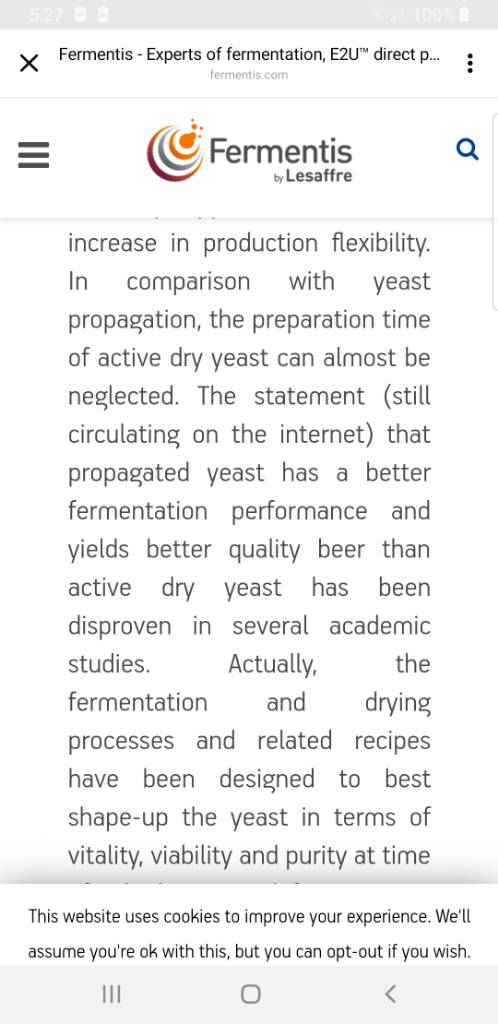Wow, this got off topic. OK, I have two thoughts, one on topic and one off.
Regarding starters, pitch rates, and dry yeast, I tend to look at all of these as mere guidelines. I figure if I am getting within 2 or 3-fold of my target pitch rates I'm doing OK. I have the means to cell counts but I am far too lazy (too much like my day job...). It hasn't let me down. I tend to do starters because yeast isn't cheap anymore, but it is the one thing I can keep and propagating almost indefinitely (if you can store frozen stocks or slants). I can get my grain in bulk at ~$1 CAD per kg and hops at ~$15 per 0.5 kg. Yeast is ~$12 for liquid and $6-8 for dried for a packet. Yeast is almost the most expensive ingredient now if I were to buy it each time! So, it only makes sense for me to propagate it, dry yeast included. I have zero worries about contamination - aseptic technique is pretty straightforward with a gas stove, the right techniques, and minimal expense.
About Brulosophy.. ..I am a hardcore, ultra-anal scientist - I make a living as a structural biologist, but I really like Brulosophy. In the lab there is a time and place for the experiment that gets you the wicked accurate results. Then there is the time when ballpark is good enough. Despite criticisms, given the parameters the Brulosophy guys have to work with, I think their experimental setup is pretty good. Could their testing be better, sure. But I view the results in context of those ballpark experiments. I only care about their results when the outcome is black and white. Those grey areas.. ..well, I can interpret them for myself. But if the results are in that close range, where maybe a better triangle test would have resolved a clear result, I simply tend to think that this variable is probably not the first one I have to worry about (not that I worry about beer, unless there is none left...).
Just my $0.02
Cheers




























![Craft A Brew - Safale BE-256 Yeast - Fermentis - Belgian Ale Dry Yeast - For Belgian & Strong Ales - Ingredients for Home Brewing - Beer Making Supplies - [3 Pack]](https://m.media-amazon.com/images/I/51bcKEwQmWL._SL500_.jpg)






























